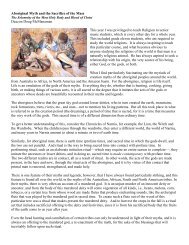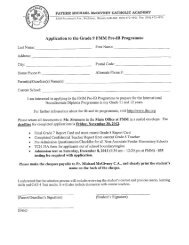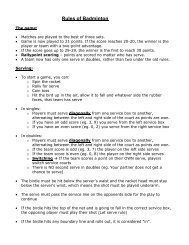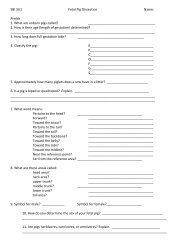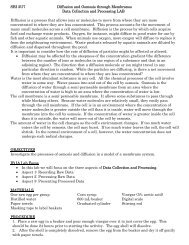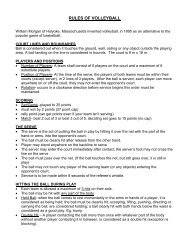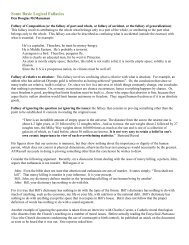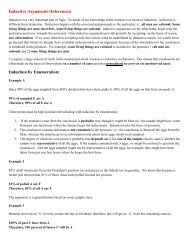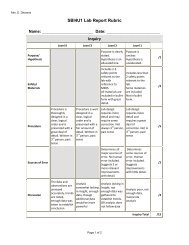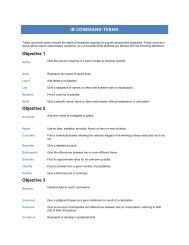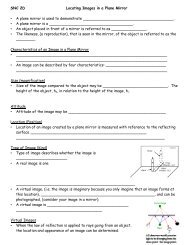Syllabus - Father Michael McGivney Catholic Academy
Syllabus - Father Michael McGivney Catholic Academy
Syllabus - Father Michael McGivney Catholic Academy
- No tags were found...
You also want an ePaper? Increase the reach of your titles
YUMPU automatically turns print PDFs into web optimized ePapers that Google loves.
Assessment statement Obj Notes4.5.6 State and apply the conditions for2constructive and for destructiveinterference in terms of path difference andphase difference.4.5.7 Apply the principle of superposition todetermine the resultant of two waves.2Topic 5: Electric currents (7 hours)5.1 Electric potential difference, current and resistance 4 hoursAssessment statement Obj Notes5.1.1 Define electric potential difference. 15.1.2 Determine the change in potential energy 3when a charge moves between two pointsat different potentials.5.1.3 Define the electronvolt. 15.1.4 Solve problems involving electric potential 3difference.Electric current and resistance5.1.5 Define electric current. 1 It is sufficient for students to know that current isdefined in terms of the force per unit lengthbetween parallel current-carrying conductors.5.1.6 Define resistance. 1 Students should be aware that5.1.7 Apply the equation for resistance inthe form2is a general definition of resistance. It is not astatement of Ohm’s law. Students shouldunderstand what is meant by resistor.where ρ is the resistivity of the material ofthe resistor.5.1.8 State Ohm’s law. 15.1.9 Compare ohmic and non-ohmic behaviour. 3 For example, students should be able to drawthe I–V characteristics of an ohmic resistor and afilament lamp.5.1.10 Derive and apply expressions for electrical 3power dissipation in resistors.5.1.11 Solve problems involving potential3difference, current and resistance.5.2 Electric circuits 3 hoursAssessment statement Obj Notes5.2.1 Define electromotive force (emf). 15.2.2 Describe the concept of internal resistance. 25.2.3 Apply the equations for resistors in seriesand in parallel.2 This includes combinations of resistors and alsocomplete circuits involving internal resistance.5.2.4 Draw circuit diagrams. 1 Students should be able to recognize and use theaccepted circuit symbols.




